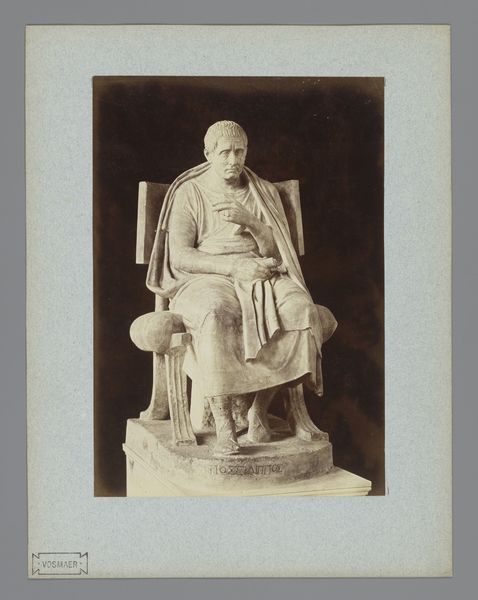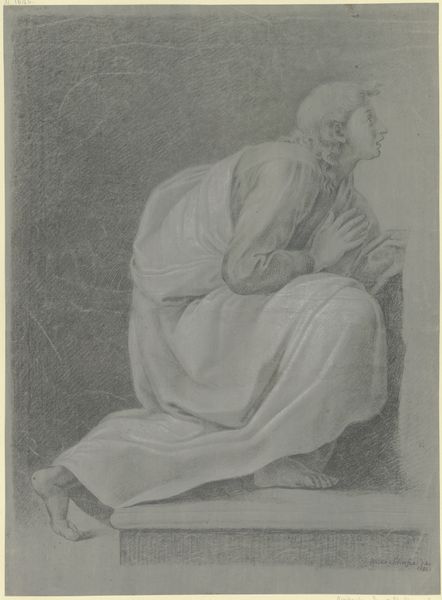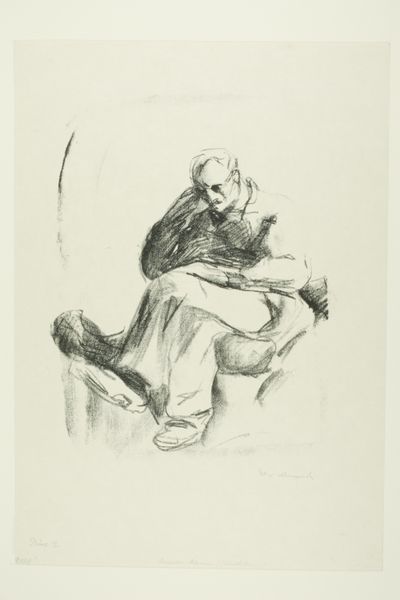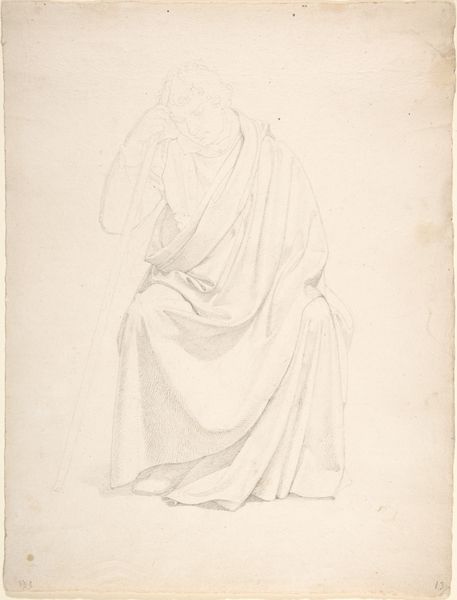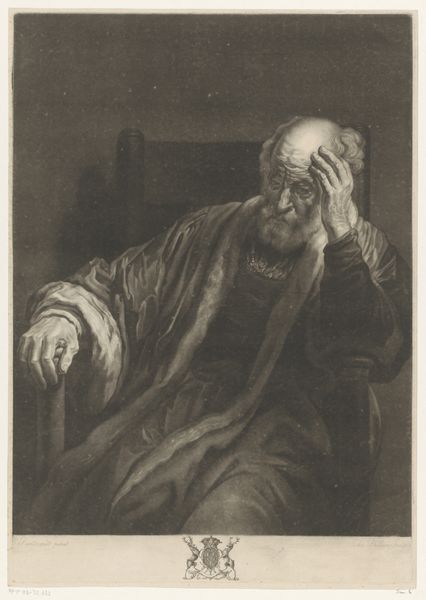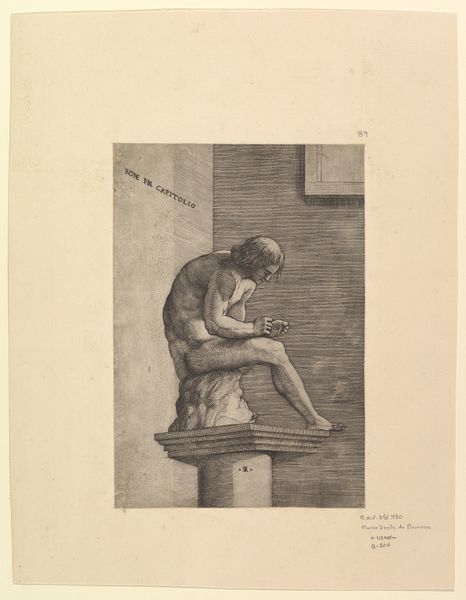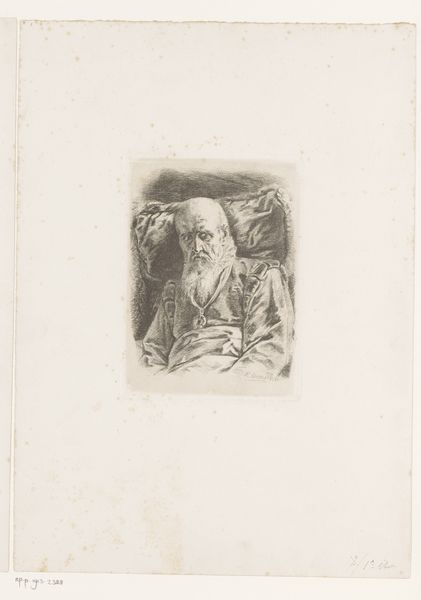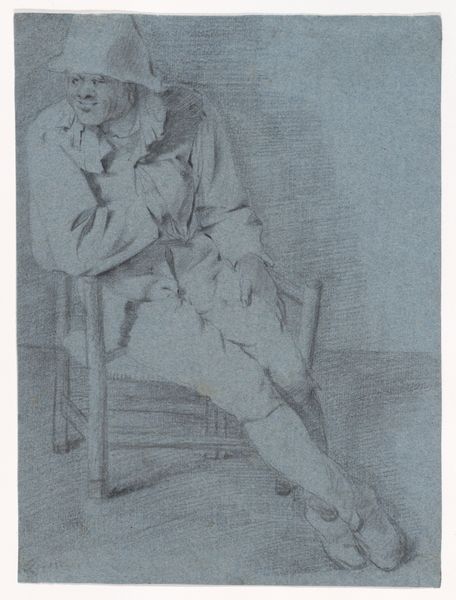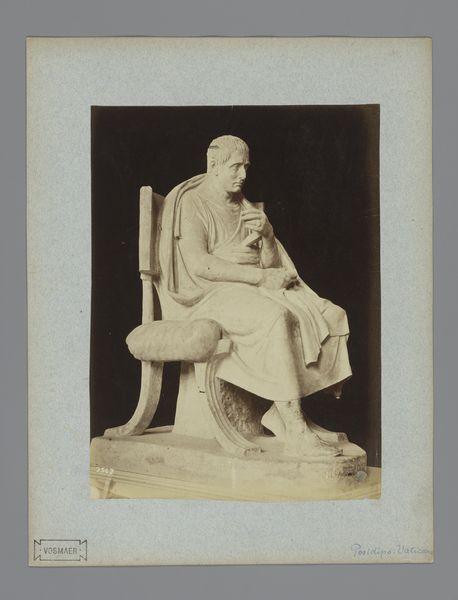
#
pencil drawn
#
amateur sketch
#
light pencil work
#
pencil sketch
#
charcoal drawing
#
portrait reference
#
pencil drawing
#
portrait drawing
#
pencil work
#
watercolour illustration
Dimensions: height 373 mm, width 278 mm
Copyright: Rijks Museum: Open Domain
Curator: This touching sketch, created with delicate pencil work, is entitled "Zittende oude man" dating back to 1812 by Charles Abraham Chasselat, currently residing here at the Rijksmuseum. Editor: The man looks despondent, doesn’t he? The subdued lighting and soft gradations certainly underscore a mood of quiet contemplation. There is something about his seated posture on the rough-hewn block that enhances this pensive atmosphere. Curator: I see what you mean; this sense of dejection might echo broader themes. We might ask what purpose a sketch such as this would serve, who it meant to be exhibited for? It bears an inscription identifying the figure as “Belisaire”. Editor: Interesting...so that would mean it is an allusion to the tragic tale of Belisarius. It explains his stoic pose. How do the tonal variations shape your perception of the narrative depicted? Curator: Precisely! The lightness amplifies Belisarius's resignation. It seems that Chasselat perhaps leveraged chiaroscuro not just to render the form three-dimensionally, but as an expressive tool as well, don't you agree? Editor: Indeed. This reminds me how historical context fundamentally shapes interpretation. The focus then might not necessarily be just on formal analysis but on understanding the artwork within its socio-cultural fabric – and consider whether its muted tones represent the subject's internal world, reflecting public sympathies for Belisarius and all the politically marginalized within French society. Curator: A thought-provoking consideration about societal echoes in artistic choices, reflecting how socio-political narratives might filter through formal elements. Thanks for highlighting those public sympathies. Editor: Thank you, and I wonder what further historical explorations future scholars could add.
Comments
No comments
Be the first to comment and join the conversation on the ultimate creative platform.

